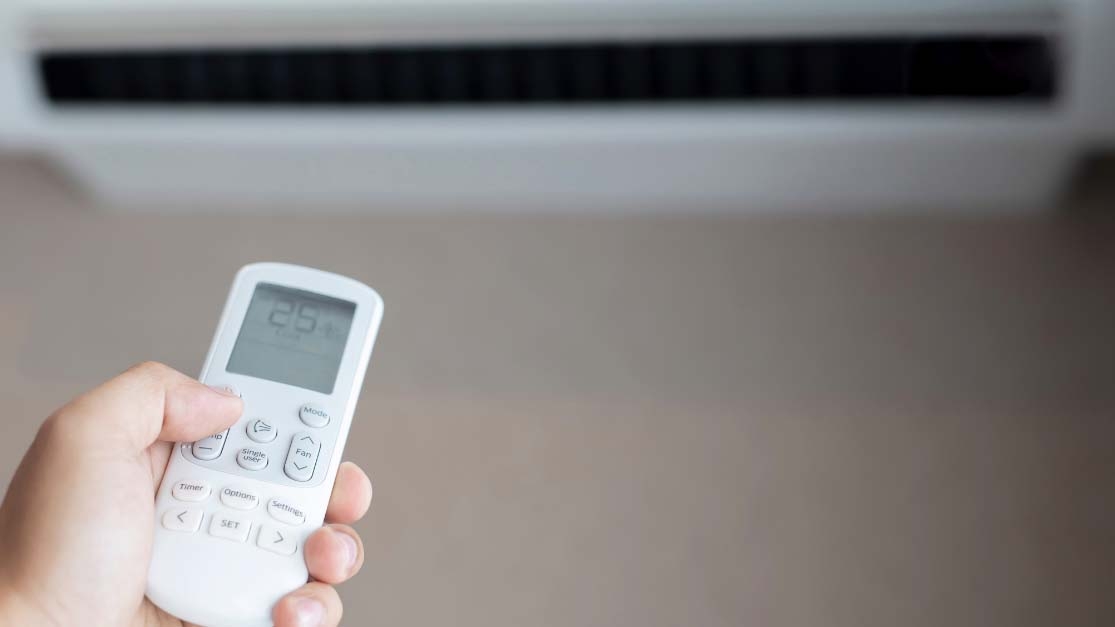Implemented across 5 villas, the pilot project showcases remarkable savings of up to 64% on the homeowners' electricity bill, as well as a CO2 reduction of 78.000 Kg in the first year of implementation.

The financial advantages of upgrading to higher-quality units through retrofitting have been widely acknowledged. Luay Ghussein, Senior Director - Engineering, TAQEEF discussed a recent initiative by the company involving the replacement of AC units in five villas, which solidified this notion as the project highlighted significant energy savings and decreased consumption in just the first year following the implementation.
TAQEEF’s pilot project involved substituting old On/Off AC units with new, highly efficient Inverter AC units across five villas in well-known communities across the emirate. The primary objective was to compare the annual electricity consumption before and after the replacement, aiming to quantify the impactful savings generated by the new machines in terms of reduced electricity bills and carbon footprint. The resulting data, extracted from the homeowners' monthly DEWA electrical bills pre- and post-installation, distinctly showcased the benefits of retrofits in tangible numbers.
Ghussein said, "In discussions about energy savings ranging from 30-40%, scepticism often arises regarding the reliability of these figures. However, in our specific case study, these numbers aren't speculative- they’re based on concrete evidence as we conducted a thorough comparison using DEWA electrical consumption readings before and after installation, conclusively demonstrating the substantial energy savings achieved. The data from DEWA serves as irrefutable proof that these savings are more than just claims- they’re a tangible reality.”
The chosen solution
TAQEEF's proposal for the five villas aimed to upgrade the existing units to General Ducted Inverter units designed to effectively manage the increased cooling load. This replacement served a dual purpose: reducing the overall electrical and carbon footprint while significantly enhancing cooling performance to ensure optimal thermal comfort for occupants.
The choice of the General Ducted Inverter units was strategic, driven by their features, which included a High Efficiency Inverter Compressor capable of adjusting its speed in response to the specific load requirements. This adaptability ensured a notable reduction in overall power consumption.
Moreover, the system was equipped with an R32 Refrigerant, known for its ability to enhance cooling performance while requiring a lower refrigerant charge. Not only did this contribute to superior efficiency, but it also resulted in a reduced Global Warming Potential (GWP) compared to the refrigerant used in the previous system. This switch led to decreased equivalent carbon emissions, aligning with environmental sustainability goals.
Additionally, the General Ducted Inverter units offered several other benefits, including lower noise levels, higher Energy Efficiency Ratio (EER), and the ability to operate efficiently even in high-temperature environments of up to 55 degrees Celsius.
A closer look
Below is a breakdown of the implementation and results across the five villas.
Emirates Hills Villa, Dubai
- Existing On/Off ducted units were ageing, which degraded the performance of the units, resulting in higher power consumption.
- Tenants were already living in the accommodation. Hence, TAQEEF personnel had to ensure the installation were done seamlessly without disturbing the tenants with the noise and vibration of construction.
- In total, 19 units were replaced in the villa consisting of Ground Floor, 1st Floor, and Roof, worth 70 tons in cooling.
Based on the electrical bills by DEWA before and after the changes, the results were:
- Annual electricity consumption saving of 135,000 kWh (22%)
- Monthly peak saving of up to 37%
- Annual carbon footprint reduction by 54,000
Acacia Avenues, Dubai
The owner of the villa in Acacia Avenues wanted a system that would result in significant energy savings and minimal power consumption, which could deliver comfort with maximum efficiency.
The villa consisted of Ground Floor and 1st Floor, and in total replaced machines worth 43 Tons in cooling changed in 5 areas.
Based on the electrical bills by DEWA before and after the changes, the results were:
- Annual electricity consumption saving of 25,000 kWh (22%)
- Monthly peak saving of up to 45%
- Annual carbon footprint reduction by 10,000 kg CO2e
The Villa, Dubai
The owner of the villa wanted a system that could deliver comfort with high efficiency.
The villa consisted of Ground Floor and 1st Floor. In total, 7 units were replaced worth 20 Tons in cooling.
Based on the electrical bills by DEWA before and after the changes, the results were:
- Annual electricity consumption saving of 20,000 kWh (42%)
- Monthly peak saving of up to 49%
- Annual carbon footprint reduction by 8,000 kg CO2e
Living Legends Villa, Dubai
A replacement of the existing On/Off ducted units was required as the existing equipment was consuming a high amount electricity during peak summer months.
The villa consisted of Ground Floor and 1st Floor. In total, 6 units were replaced worth 20 Tons in cooling.
Based on the electrical bills by DEWA before and after the changes, the results were:
- Annual electricity consumption saving of 11,000 kWh (31%)
- Monthly peak saving of up to 42%
- Annual carbon footprint reduction by 4,200 kg CO2e
Springs Villa, Dubai
A replacement of the existing On/Off ducted units was required as the existing equipment was consuming a high amount of electricity during peak summer months.
The villa consisted of Ground Floor and 1st Floor and in total, 5 units were replaced worth 13.5 Tons in cooling.
Based on the electrical bills by DEWA before and after the changes, the results were:
- Annual electricity consumption saving of 6,100 (50%)
- Monthly peak saving of up to 64%
- Annual carbon footprint reduction by 2,400 kg CO2e
Overall…
This replacement initiative across 5 Villas by TAQEEF helped achieve:
- 1,962,000 Btu/h (163.5 Tons) of efficient and comfortable cooling
- Annual saving in electricity consumption by 196,000 kWh
- Annual reduction in carbon footprint by 78,000 kg CO2e
- Peak savings of up to 64% on the electricity bill
What variables impact the amount of electricity saving in air conditioners?
TAQEEF further highlighted that homeowners should keep in mind the variables can impact electricity savings within Air Conditioning. These include…
Setpoint
The temperature set by the homeowner on the thermostat has a critical impact as the lower the value the higher the consumption. Additionally, if the homeowner used to set the temperature of the old unit to 20°C and the new unit to 24°C, further savings can be achieved.
Summer Occupancy
If the homeowner frequently travels during the summer, the potential savings will be reduced as the peak saving is usually within the hot summer periods.
Age of the Old Units, Service History, and Efficiency of the New Units
As AC unit performance degrades over time, the period in which replacement happens is important. For example, the saving potential of the new units will be much higher if the existing units were operational for 20 years and without any maintenance history. Another factor is the efficiency of the new units. If the homeowner opts to invest in highly efficient units, the potential savings on the old units will be realised in a shorter period.
Consumption Threshold
The level of consumption plays a role in the overall savings of the new systems. If the homeowner rarely operates the AC unit, they are less likely to see any significant amount of savings from replacing the old units with efficient units.
Widespread implications
Inadequacies and neglect of HVACR installations are a problem all around the world, with several countries implementing measures to achieve improvements and energy savings across existing building stock, either through higher energy prices or certification requirements for installation and operation personnel, buildings or other regulatory frameworks. Initiatives, such as the pilot project initiated by TAQEEF, highlight the untapped savings potential of retrofits, especially as new products and innovations enter the market by offering a clear demonstration of the return on investment, both for people and the planet.
